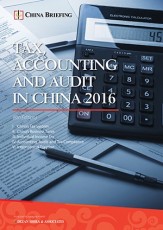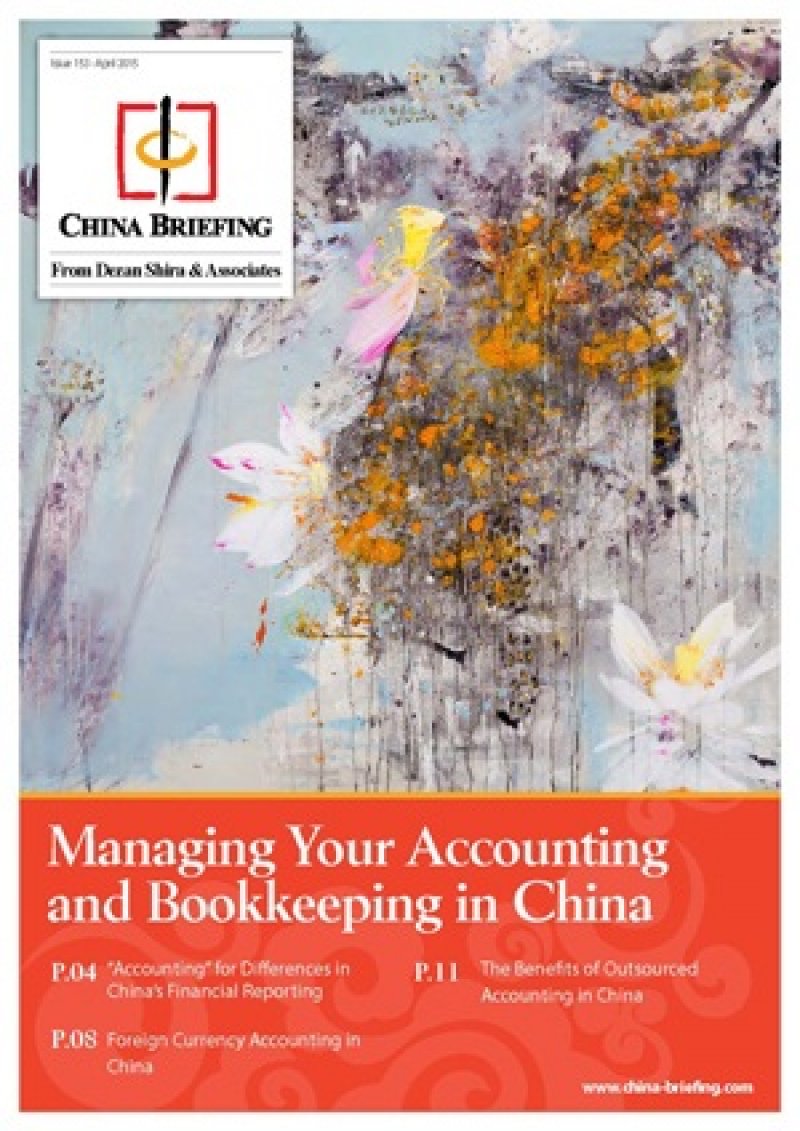A Guide to Consumption Tax in China
Once China’s value-added tax (VAT) reform is fully implemented on May 1, consumption tax will become one of only two major indirect taxes in the country. Consumption tax is imposed on all the individuals and organizations which manufacture and import taxable products, process taxable products under consignment, or sell taxable products. In 2015, China’s consumption tax revenue amounted to RMB 890.7 billion.
The current system of consumption tax in China was implemented in 1994 via the Interim Regulations on Consumption Tax, passed by the State Council in 1993, and further amended in 2008. The Implementation Guidelines were promulgated in 2008 by the MOF and SAT. Consumption tax forms part of the base upon which VAT is levied. In this article, we provide a brief introduction to China’s consumption tax system and illustrate the tax calculation process with two examples.
Taxable Products
Consumption tax is levied on the below five categories of products:
- Products whose over-consumption is harmful to health, social order and the environment, e.g., tobacco, alcohol, firecrackers and fireworks;
- Luxury goods and non-necessities, such as precious jewelry and cosmetics;
- High-energy consumption and high-end products, such as passenger cars and motorcycles;
- Non-renewable and non-replaceable petroleum products, such as gasoline and diesel oil; and
- Financially significant products, such as motor vehicle tires.
A company processing taxable goods for others is liable to withhold and pay consumption tax based on the value of the raw materials used. Consumption tax is filed and paid monthly.
 RELATED: Tax and Compliance Services from Dezan Shira & Associates
RELATED: Tax and Compliance Services from Dezan Shira & Associates
Tax Rate
Tax rates vary considerably with the type of product in question. Consumption tax is calculated ad valorem or based on quantity. The formulae are:
a. Ad Valorem:
Consumption tax payable = Taxable sales amount x Tax rate
Example 1
A car manufacturer sold RMB 6 million worth of 1.8 liter passenger cars in a month.
The applicable consumption tax rate is five percent.
Consumption tax payable = RMB 6 million x 5% = RMB 300,000
b. Quantity-based:
Consumption tax payable = Taxable sales quantity x Tax amount per unit
Example 2
A gasoline company sold 50,000 liters of unleaded gasoline in a month. The applicable consumption tax rate is RMB 1.0/liter.
Consumption tax payable = 50,000 liters x RMB 1.0/liter = RMB 50,000
Consumption Tax Rebate
For export goods, no consumption tax is payable. If the exported goods were previously imported into China, the consumption tax paid upon import is refundable. For goods that are VAT exempt, consumption tax is also exempt; however, previously paid consumption tax is neither refundable nor creditable from consumption tax payable for domestically sold goods.
On November 25, 2014, the MOF and the SAT jointly released the “Announcement on Adjusting Consumption Tax Policies (Cai Shui [2014] No.93),” which took effect on December 1, 2014. According to the Announcement, consumption tax has been removed for the below items:
- Ethyl alcohol;
- Automobile tires;
- Automobile leaded gasoline; and
- Small displacement motorcycles with a cylinder capacity of less than 250 ml.
Meanwhile, consumption tax of three and 10 percent will continue to be levied on motorcycles with a cylinder capacity of 250 ml and 250+ ml, respectively. In January 2015, the Chinese government raised the consumption tax on petroleum product again (the third time in three months), in an effort to control air pollution and support the renewable energy sector. For a complete list of the consumption tax rates, please download China Briefing’s guidebook Tax, Accounting and Audit in China 2016.
|
Asia Briefing Ltd. is a subsidiary of Dezan Shira & Associates. Dezan Shira is a specialist foreign direct investment practice, providing corporate establishment, business advisory, tax advisory and compliance, accounting, payroll, due diligence and financial review services to multinationals investing in China, Hong Kong, India, Vietnam, Singapore and the rest of ASEAN. For further information, please email china@dezshira.com or visit www.dezshira.com. Stay up to date with the latest business and investment trends in Asia by subscribing to our complimentary update service featuring news, commentary and regulatory insight. |

 Tax, Accounting, and Audit in China 2016
Tax, Accounting, and Audit in China 2016
This edition of Tax, Accounting, and Audit in China, updated for 2016, offers a comprehensive overview of the major taxes that foreign investors are likely to encounter when establishing or operating a business in China, as well as other tax-relevant obligations. This concise, detailed, yet pragmatic guide is ideal for CFOs, compliance officers and heads of accounting who must navigate the complex tax and accounting landscape in China in order to effectively manage and strategically plan their China-based operations.
 Managing Your Accounting and Bookkeeping in China
Managing Your Accounting and Bookkeeping in China
In this issue of China Briefing, we discuss the difference between the International Financial Reporting Standards, and the accounting standards mandated by China’s Ministry of Finance. We also pay special attention to the role of foreign currency in accounting, both in remitting funds, and conversion. In an interview with Jenny Liao, Dezan Shira & Associates’ Senior Manager of Corporate Accounting Services in Shanghai, we outline some of the pros and cons of outsourcing one’s accounting function.
 Annual Audit and Compliance in China 2016
Annual Audit and Compliance in China 2016
In this issue of China Briefing, we provide a comprehensive analysis of the various annual compliance procedures that foreign invested enterprises in China will have to follow, including wholly-foreign owned enterprises, joint ventures, foreign-invested commercial enterprises, and representative offices. We include a step-by-step guide to these procedures, list out the annual compliance timeline, detail the latest changes to China’s standards, and finally explain why China’s audit should be started as early as possible.
- Previous Article Hiring Disabled Workers in China: Incentives and Challenges
- Next Article How to Choose a Third-Party When Entering China’s e-Commerce Market









